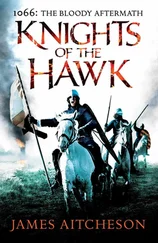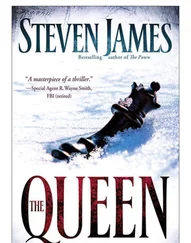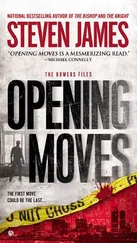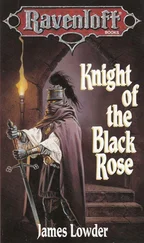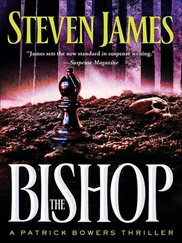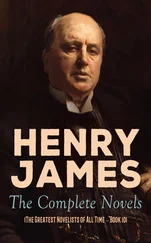Steven James - The Knight
Здесь есть возможность читать онлайн «Steven James - The Knight» весь текст электронной книги совершенно бесплатно (целиком полную версию без сокращений). В некоторых случаях можно слушать аудио, скачать через торрент в формате fb2 и присутствует краткое содержание. Жанр: Полицейский детектив, на английском языке. Описание произведения, (предисловие) а так же отзывы посетителей доступны на портале библиотеки ЛибКат.
- Название:The Knight
- Автор:
- Жанр:
- Год:неизвестен
- ISBN:нет данных
- Рейтинг книги:3 / 5. Голосов: 1
-
Избранное:Добавить в избранное
- Отзывы:
-
Ваша оценка:
- 60
- 1
- 2
- 3
- 4
- 5
The Knight: краткое содержание, описание и аннотация
Предлагаем к чтению аннотацию, описание, краткое содержание или предисловие (зависит от того, что написал сам автор книги «The Knight»). Если вы не нашли необходимую информацию о книге — напишите в комментариях, мы постараемся отыскать её.
The Knight — читать онлайн бесплатно полную книгу (весь текст) целиком
Ниже представлен текст книги, разбитый по страницам. Система сохранения места последней прочитанной страницы, позволяет с удобством читать онлайн бесплатно книгу «The Knight», без необходимости каждый раз заново искать на чём Вы остановились. Поставьте закладку, и сможете в любой момент перейти на страницу, на которой закончили чтение.
Интервал:
Закладка:
“No.”
“Or use behavioral or psychological profiling?”
“No.”
“In fact”-she glanced at her notes-“you’ve even written, and I quote, ‘I don’t care why someone commits a crime. I would rather catch him than try to psychoanalyze him.’”
Actually, I was kind of proud of that one. “Yes. I did write that, and the rest of the paragraph as well: ‘Investigators need to stop asking “why?” and start asking “where?” It doesn’t matter why the offender committed the crime, our goal is to find out where he is.’”
“And you’ve even derided the use of DNA analysis. Isn’t that correct?”
“I’ve never derided it, I just don’t depend on it. Criminals watch CSI too. It’s not uncommon for them to leave other people’s blood, hair, saliva, even semen, at crime scenes to misdirect investigations. They’re using the system against us. And they’re good at it.”
“So you prefer geographic profiling.” She didn’t offer it as a question.
“It’s one of the most effective tools I know of for narrowing the suspect pool in cases involving serial offenders.”
“But Dr. Bowers”-she flavored her words with slowly escalating sarcasm-“isn’t geoprofiling only useful if there are five or more crime locations? Isn’t that the minimum number needed for an accurate geoprofile?”
“The more linked cases, the more accurate we can be, yes. Given twelve or more locations we can be up to 97 percent accurate in narrowing down the most likely location of the offender’s home base.”
Now, she feigned ignorance. “But how do you know that a series of crimes are linked? If you have, let’s say, sixteen murders in two states over two years, how can you tell that they’re all committed by the same perpetrator?”
“Linkage analysis,” I said, “otherwise known as Comparative Case Analysis, is typically the responsibility of local law enforcement. CCA is done through a careful review of offender initiated linkage, eyewitness descriptions, crime scene locations, victimol-ogy-that is, characteristics or relationships of the victims that point to a connection between the crimes-and physical evidence found at the crime scenes. With regard to the sixteen murders Mr. Basque is accused of, I analyzed the data myself and felt confident that the homicides were committed by the same person.”
“But you might have been wrong?”
I peered past her to the morbid photographs spread across the evidence table. “It’s possible. All investigations deal in terms of probabilities, not certainties.”
I thought she might jump on that, but instead said, “And for your investigative approach to work, isn’t it true that the offender must have a stable anchor point? Not just be passing through the area?”
She’d done her research, I had to give her that much. She was quoting almost directly from the fifteenth chapter of my book Understanding Crime and Space.
“That’s right,” I said. “Peripatetic, that is, transitory offenders, skew the results. Imagine a person standing in a closet, spray painting the walls while turning in a circle. If he left in the middle of the job, it might be possible to locate the precise location where he’d been standing by analyzing the patterns and density of the droplets of paint on the walls. But it would obviously be impossible if he walked around the closet while painting.”
“Yes, but what if he is moving, Dr. Bowers? What if the offender is a commuter, so to speak? He drives to the city, commits his crime, and then returns to his home in the suburbs afterward. That’s possible, isn’t it? And that would make the geoprofile completely useless-or at best, inaccurate-correct?”
I’d heard all of these objections before, dealt with them in depth in my book, addressed some of them earlier in the proceedings during Emilio’s examination. “Just like any investigative technique, geographic profiling has its limitations.”
Ms. Eldridge-Gorman opened her mouth, but before she could respond I added, “But so does every method. Before you can match DNA you need to find some DNA. It’s the same for fingerprints or hair or bite mark analysis.”
After a quick breath I went on, “In the latest geoprofiling software, we’ve been eliminating some of the issues you just mentioned. We’ve included spatial temporal movement analysis that calculates the mean center of the crimes based on crime sequence and not just location. This helps us see if the anchor point of the crimes is shifting. Enhanced virtual temporal topographies reveal the synchronic and diachronic changes of crime patterns within specific locations. Also, we’ve added a Bayesian journey-to-crime model that incorporates current research about-”
I noticed the glazed eyes of the jury members.
Oh. That was brilliant, Dr. Egghead. Just brilliant.
Maybe I should have gone into my use of multivariate statistics too. That would have been good. Or spatial density analysis and the use of kernel smoothing routines to reduce the effects of the psychological barriers associated with mental maps. I’m sure that would have really impressed them.
Priscilla looked pleased that she’d lured me into using techno jargon. “So, in layman’s terms,” she said, “you’ve been improving the technology and refining your approach since my client’s arrest thirteen years ago.”
“That’s correct.”
“So you admit, then, that when my client was arrested, your investigative strategy needed improvement.”
“That’s not exactly-”
A slight grin. “Back to my question. If this technique only works with an offender who has a stable anchor point or home base”-she raised her hands in a dramatic display of bewilderment-“how do you know he’s not mobile before you catch him?” Then she gave me a pretend smile. “The answer is you don’t, do you, Dr. Bowers?”
“No-”
“So, your conclusions could be completely-”
I’d had enough of this. “Every investigation is a holistic process. You continually evaluate the evidence and revise your investigative strategy as needed.” My voice had turned harsh, argumentative, and that was probably what she’d been shooting for. I tried to tone it down. “Geographic profiling is just one facet of a well-rounded investigation.”
As I said the words “well-rounded investigation,” I glanced again at the pieces of evidence lying on the table. Juanita Worthy’s faded pink blouse, splattered with dark stains… the scalpel Richard Devin Basque had been holding when I arrested him… the enlarged Associated Press photos of the sixteen known victims… a map of the Midwest with the locations of each crime marked with red thumbtacks… a hatchet, still stained with blood…
Ms. Eldridge-Gorman went on, but the evidence had caught my attention and I was only half-listening to her. “Isn’t it true”-she was pacing theatrically in front of the jury-“that when you were investigating the crimes for which my client was…” She hesitated, searching for the right phrase. “A person of interest… that you compared the timing of the crimes to the work schedules of the suspects to try and narrow down the suspect pool?”
I shifted my focus back to her. “Yes. The nature of these crimes would have required the offender to be present while they occurred.”
But in my mind I was clicking through the items on the table, now removed from the plastic evidence bags: the Smith amp; Wesson Sigma that Basque had fired at me… the key to the slaughterhouse freezer where he’d kept four of the women’s lungs…
Something about the positioning of the evidence on the table didn’t seem right.
“Dr. Bowers.” Priscilla Eldridge-Gorman stalked across the courtroom toward me. “Do you think justice is served when a man is convicted of first-degree murder based on his days off from work?”
Читать дальшеИнтервал:
Закладка:
Похожие книги на «The Knight»
Представляем Вашему вниманию похожие книги на «The Knight» списком для выбора. Мы отобрали схожую по названию и смыслу литературу в надежде предоставить читателям больше вариантов отыскать новые, интересные, ещё непрочитанные произведения.
Обсуждение, отзывы о книге «The Knight» и просто собственные мнения читателей. Оставьте ваши комментарии, напишите, что Вы думаете о произведении, его смысле или главных героях. Укажите что конкретно понравилось, а что нет, и почему Вы так считаете.

